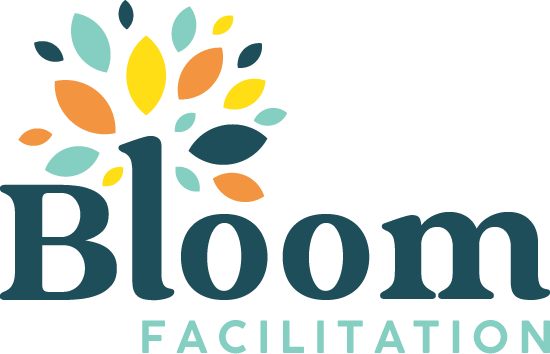Facilitation Roles Series
There are many roles to play as a process facilitator or as the leader of a meeting. I have a framework of eight roles that I teach: Party Host, Race Car Driver, Mechanic, Nurse, Trip Leader, Improv Comedian, Designer, and Rugby Referee. In this post I want to highlight the role of the:
Designer
Adjusting elements in the external environment in order to evoke feelings in the people who interact with it; changing the physical form or the structure of a meeting in order to influence the outcomes

Crafting Meeting Experiences: Lessons from Design
A designer is “a person who plans the form, look, or workings of something before its being made or built.” Designers think about how they want the people who are interacting with an object or space to feel. This is an element from design that we can really learn from as meeting facilitators. A meeting facilitator is therefore also a designer.
From Domination to Inclusion – Meeting Space Design Has Changed
For many years in the world of management, executives were taught how to design a meeting in order to reinforce power structures. My dad, who went to management and leadership seminars in the 1980’s, told me how he was instructed to set up the meeting room in a very specific way. The type of table, number of chairs, configuration of all were all chess pieces in a game to intimidate the other party at the meeting. He described attending a meeting once in which the leader of the meeting had been to the same seminar. My dad walked in the room and recognized the set up immediately. Even knowing the game afoot, it was hard not to fall victim to its influence.
The same techniques that management gurus were using to create intimidation and keep power structures intact can also be used today for completely different purposes. By being intentional about the furniture, layout, and environmental factors of your meeting space, you can use these design features for good, to create inclusive space that furthers your group’s values and objectives.
Designer’s Guide to Meeting Success: Practical Tips for Facilitators
- Be intentional about your room layout – long horizontal tables reinforce heirarchy and discourage collaboration. Circular layouts are best for group collaboration and a feeling of inclusion. Look for meeting rooms in which the tables are flexible and can be moved to suit your purposes. For more on inclusive meeting room design, read Community: The Structure of Belonging by Peter Block as he goes into great detail and has lots of helpful suggestions.
- Lighting – Whenever possible, meet in a location with natural lighting. I often avoid using slides or projection in order to enable the room to have as much natural lighting as possible.
- Color – Add energy to your meeting by adding color. It is easy to add color by bringing paper, ribbons, fabric or wrapping paper to put on the tables as a table runner. You could also have a colorful centerpiece. If your budget allows, flowers or plants add both color and nature to your gathering. I also like to use the colorful Mr. Sketch markers which provide both color and fun smells.
- Sound – I often will play music while people are entering the room for a meeting. It sets the tone and can encourage talking and engagement. The best music I have found is the Otis Redding Pandora station (no explicit language and it seems to have fairly universal appeal across ages and cultures).
- All five senses – In general, think about all five senses when you are planning your gathering. How will people see the space? How will they experience it? Is it too cold? Too hot? Is the air quality good or is there a distracting or negative smell? It is important to find out who you can contact for questions about the meeting room if you are using a space that is managed by another party.
For more in this series, see what a facilitator can learn from a:
